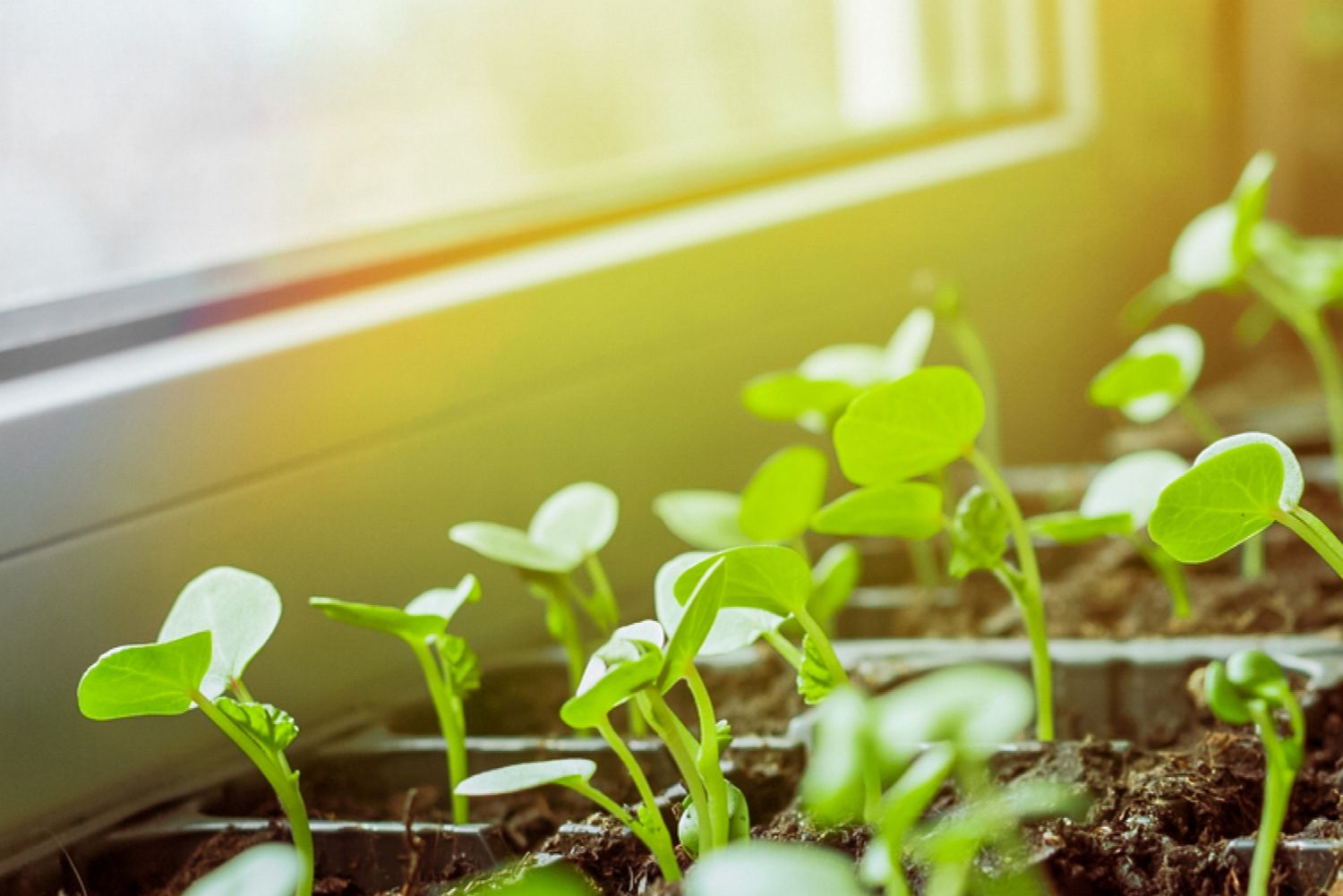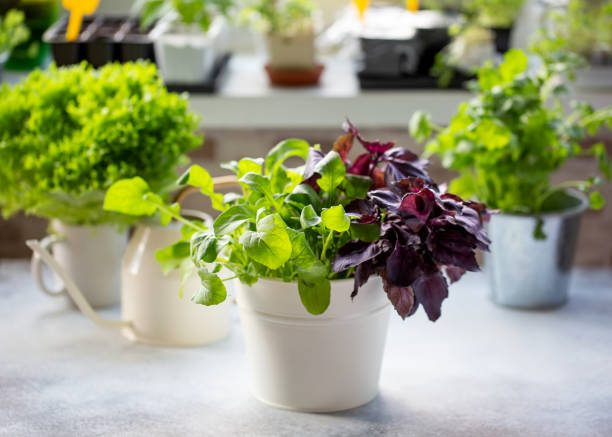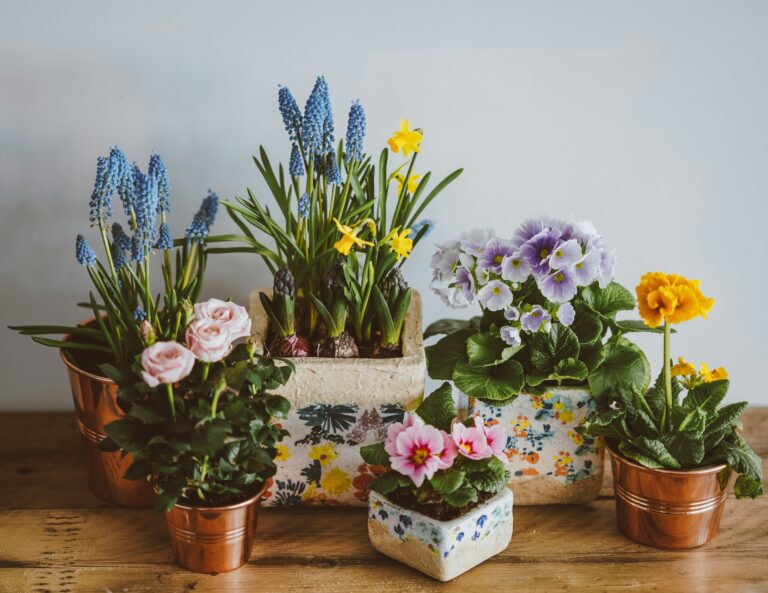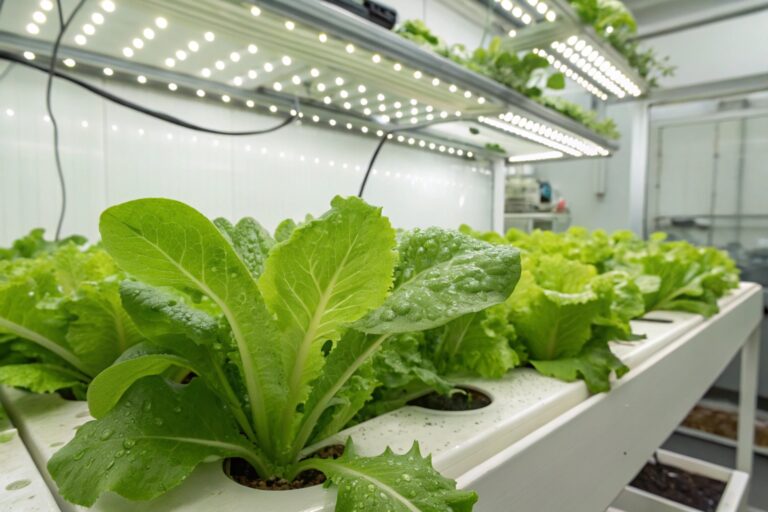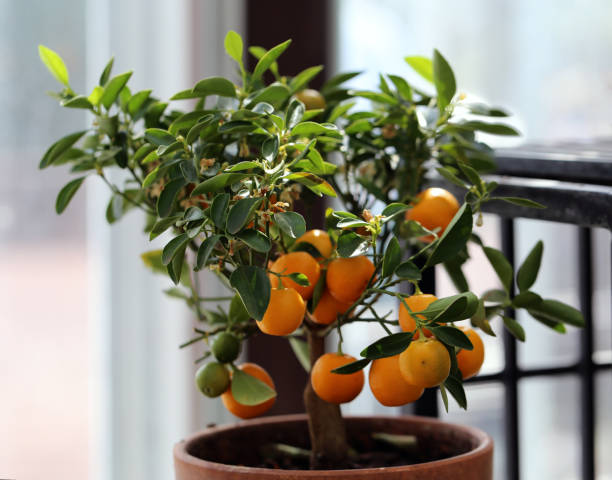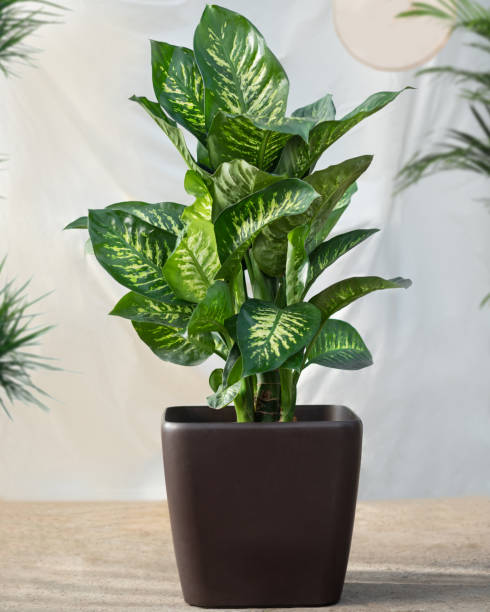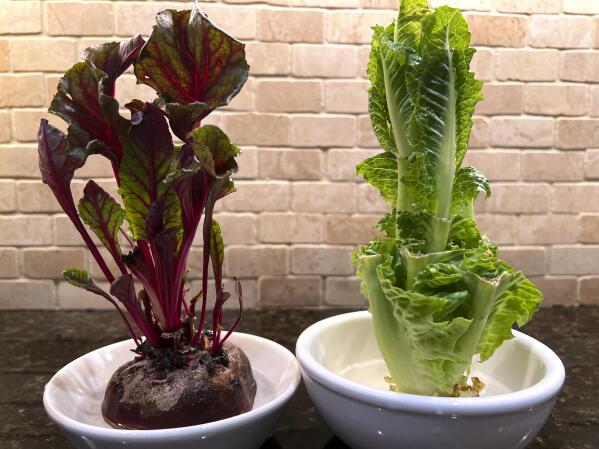How to Start Seeds Indoors Without Grow Lights
Starting seeds indoors is a magical process that connects you to the essence of growth and renewal. It’s like setting the stage for a beautiful garden performance—all without the need for grow lights!
If you’re wondering how to kick-start your gardening adventure with just a few simple tools and a lot of love, I’ve got you covered.
Let’s dive into the step-by-step process of starting seeds indoors without grow lights.
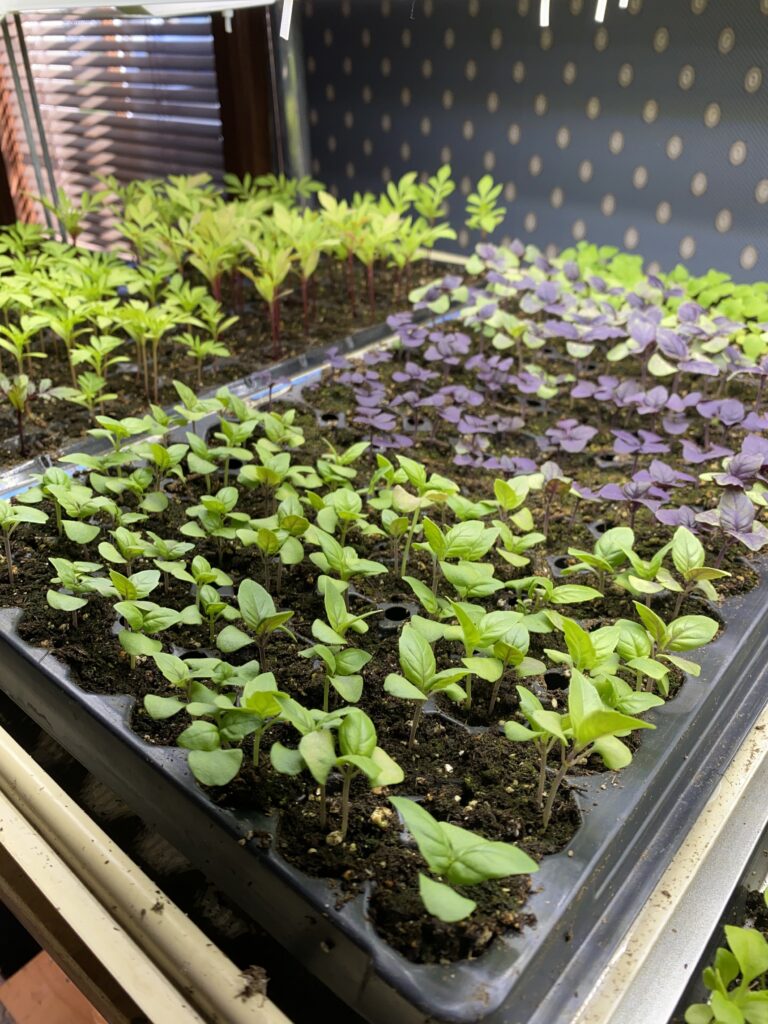
Why Start Seeds Indoors?
Starting seeds indoors gives your plants a head start, especially if you live in an area with a short growing season.
By nurturing them indoors, you can control their environment, ensuring they’re strong and healthy when it’s time to transplant them outside. Plus, it’s incredibly rewarding to watch those tiny seeds sprout and grow under your care.
What You’ll Need
You don’t need fancy equipment to start seeds indoors. Here’s a list of essentials:
- Seeds: Choose varieties suited for your climate and growing season.
- Containers: Recycled items like egg cartons, yogurt cups, or seed trays work perfectly. Just make sure they have drainage holes.
- Seed-Starting Mix: A lightweight, well-draining mix is ideal. Avoid using garden soil as it’s too heavy for delicate seedlings.
- Watering Can or Spray Bottle: Gentle watering is key.
- Plastic Wrap or Clear Lids: To create a mini greenhouse effect.
- A Sunny Window: South-facing windows are ideal for natural light.
Step-by-Step Guide
1. Choose the Right Seeds
Pick seeds that thrive in your region and are easy to start indoors. For spring preparation, select vegetables and flowers that will be transplanted outdoors after the last frost date.
Tomatoes, peppers, basil, marigolds, and zinnias are excellent options. Check the seed packet for specific planting timelines and growing requirements.
Planning ahead ensures you’re aligned with your local climate.
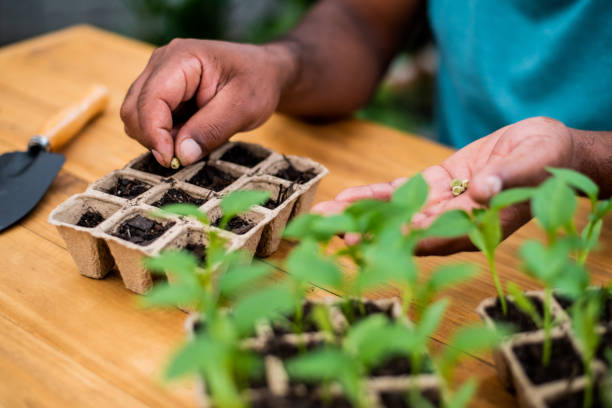
2. Prepare Your Containers
Reuse materials like egg cartons, yogurt cups, or even takeout containers.
Wash them thoroughly with soap and water to remove any potential pathogens. Ensure the containers have adequate drainage by poking small holes in the bottom. Place a tray or plate underneath to catch excess water.
Prepping your containers now will save you time later and provide a clean slate for your seeds.
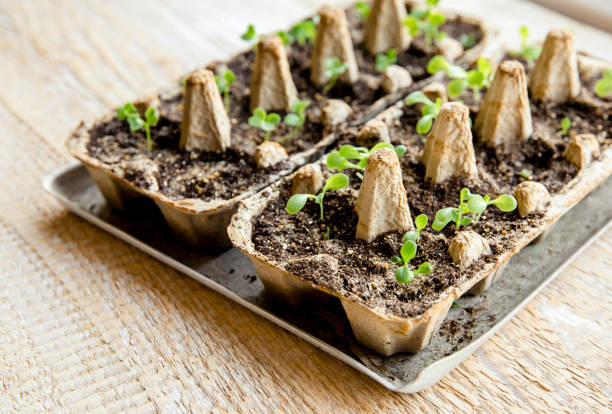
3. Fill with Seed-Starting Mix
A high-quality seed-starting mix is crucial for healthy seedlings. These mixes are specifically designed to be light and airy, allowing roots to grow easily.
Moisten the mix before filling the containers; it should be damp but not soggy. Gently press the mix into your containers without compacting it too much, as the roots need room to spread out.
4. Plant Your Seeds
Check the seed packet for the recommended planting depth. As a general rule, plant seeds at a depth of about two to three times their size. Use a pencil or your finger to create small holes, place the seeds inside, and cover them lightly with soil.
Label each container with the seed variety and planting date. This small step is a lifesaver later when you’re identifying seedlings.
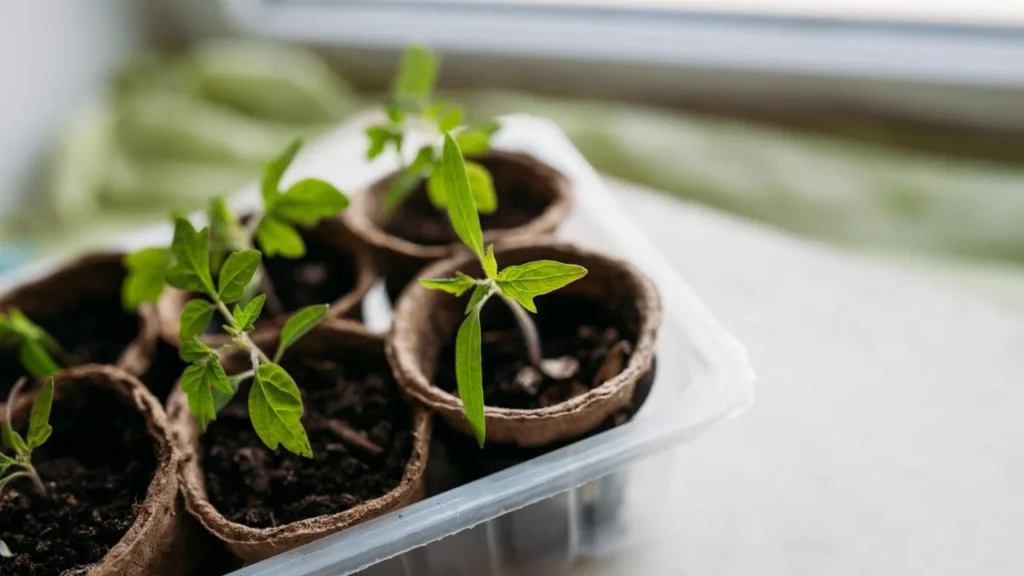
5. Create a Mini Greenhouse
Cover the containers with plastic wrap or a clear lid to trap moisture and heat. This creates a greenhouse effect, speeding up germination. Poke a few small holes for ventilation to prevent mold.
Place the containers in a warm area—above the refrigerator or near a radiator works well. Check daily for sprouting and remove the cover once the seeds germinate.
6. Place in a Sunny Spot
Once your seedlings emerge, they need plenty of light to grow strong. Position them in a south-facing window where they’ll get at least six to eight hours of sunlight daily.
If natural light is limited, consider using reflective surfaces like aluminum foil to bounce light onto the seedlings. Rotate the containers regularly to encourage straight, upright growth.
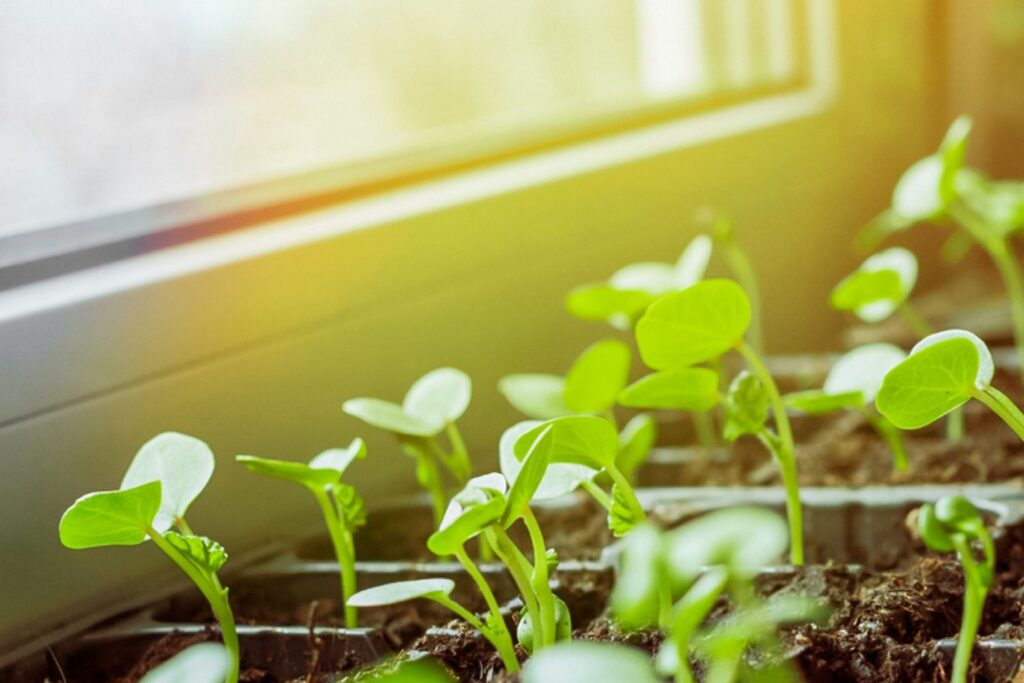
7. Water with Care
Seedlings are delicate, and overwatering can quickly lead to problems like root rot. Use a spray bottle or a watering can with a fine spout to gently moisten the soil. Check the moisture level daily—the top layer should be damp but not saturated.
Watering from the bottom, by placing containers in a tray of water, is another effective method that encourages deep root growth.
8. Thin the Seedlings
When your seedlings develop their first set of true leaves (the second pair of leaves), it’s time to thin them out. Use small scissors to snip the weaker seedlings at the base, leaving the strongest ones to thrive.
Avoid pulling out seedlings, as this can disturb the roots of their neighbors.
Thinning ensures each plant has enough space and nutrients to grow.
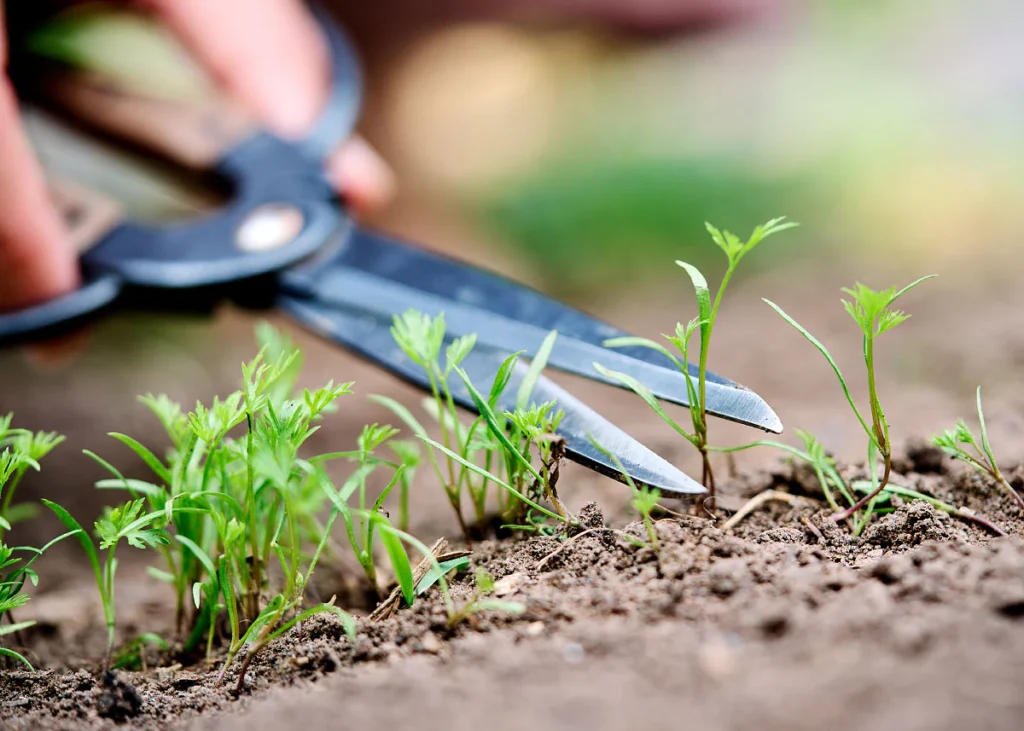
9. Harden Off Before Transplanting
Two weeks before transplanting outdoors, begin the hardening-off process. Place your seedlings outside in a sheltered spot for a few hours each day, gradually increasing their exposure to sunlight, wind, and fluctuating temperatures. This step acclimates them to outdoor conditions and reduces transplant shock.
Remember to bring them indoors at night if temperatures drop significantly.
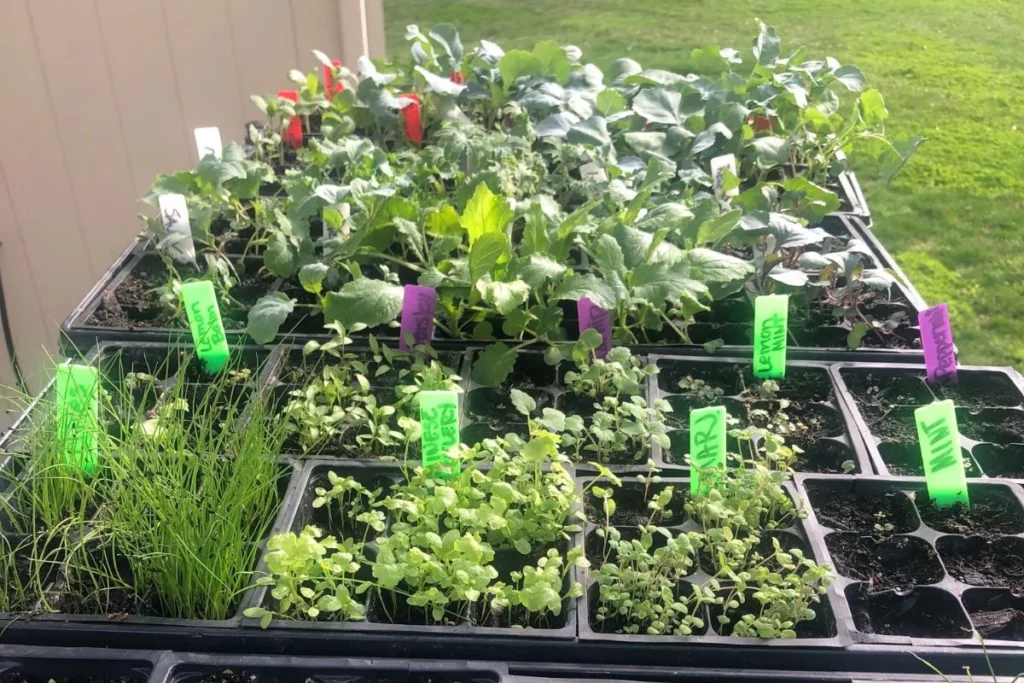
Spring Preparation Tips
Spring is a busy time for gardeners, so getting organized early makes a world of difference. Here are some additional preparation tips:
- Prepare Your Garden Beds: Clear debris, test the soil pH, and amend it with compost or organic matter for nutrient-rich soil.
- Plan Your Layout: Decide where each plant will go based on sunlight and spacing needs.
- Stock Up on Supplies: Ensure you have tools, stakes, and mulch ready for planting day.
- Keep a Garden Journal: Track what you’ve planted, germination rates, and any observations to improve future gardening efforts.
Troubleshooting Tips
- Leggy Seedlings: If your seedlings are tall and spindly, they’re not getting enough light. Move them closer to the window or use reflective materials to boost light exposure.
- Mold Growth: Increase ventilation by removing the plastic cover sooner or using a small fan to circulate air.
- Overwatering: Monitor moisture levels carefully to avoid waterlogged soil, which can lead to fungal issues.
The Joy of Growing
There’s something profoundly satisfying about nurturing seeds into thriving plants. Even without grow lights, you can cultivate a vibrant indoor garden that’s ready to burst into life come spring.
By following these detailed steps and preparing ahead, you’re setting the stage for a bountiful and beautiful growing season. So grab those seeds, find a sunny window, and let the magic begin!


